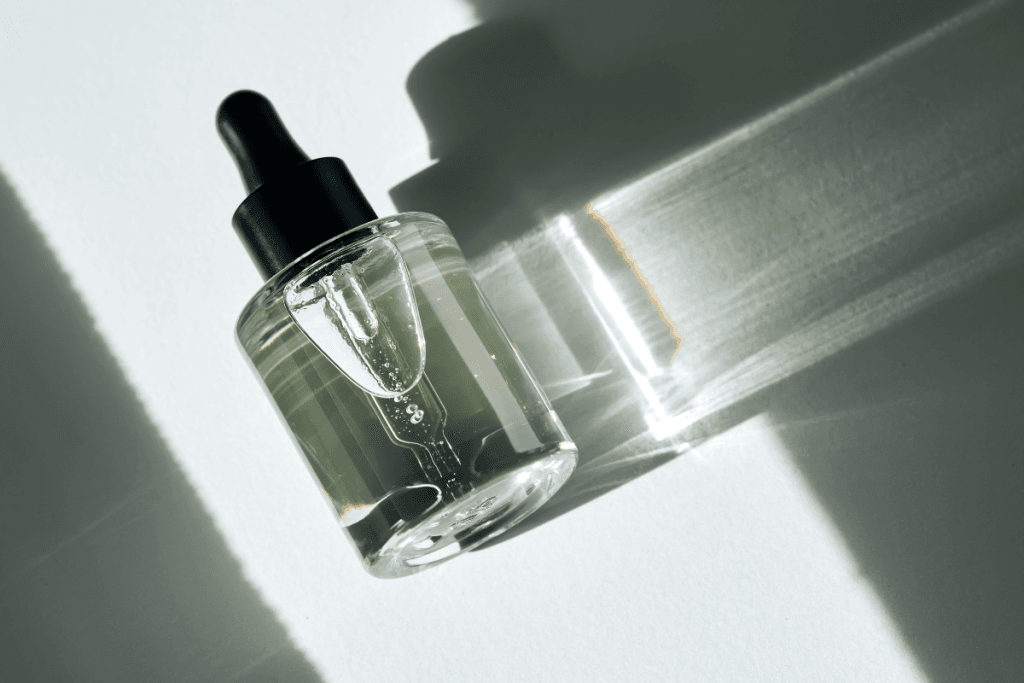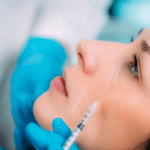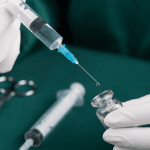The global anti-aging market is projected to exceed $120 billion by 2030, reflecting a steady demand for interventions that improve skin quality and slow visible signs of aging. Among these interventions, peptides for skin have become a central tool in dermatology and aesthetic medicine.
Clinical studies show that bioactive peptides stimulate collagen synthesis and enhance skin barrier repair, making them an attractive option for topical and injectable therapies. For medical practitioners, understanding the mechanisms, clinical applications, and patient outcomes linked to peptides ensures evidence-based integration into practice.
What Are Peptides for Skin?
In dermatology, peptides are recognized as short amino acid chains that act as bioactive messengers. They influence fibroblasts, keratinocytes, and melanocytes, helping remodel collagen, elastin, and keratin networks while regulating pigmentation and healing. Their true strength lies in their versatility; a single peptide formulation can address fine lines, barrier dysfunction, or pigmentation, depending on its sequence and delivery system.
The best injectable peptides for skin tightening options extend these benefits deeper into the dermis, allowing targeted structural repair and rejuvenation treatment. This diversity highlights why understanding how peptides work for the skin is key to personalized anti-aging care.
Key Points for Clinicians
- Different peptide categories (signal, carrier, enzyme-inhibitor, and neuropeptides) offer distinct therapeutic pathways.
- Formulation stability and delivery systems strongly influence clinical effectiveness.
- Peptides can be introduced as entry-level treatments for hesitant or sensitive patients.
- Their safety profile makes them suitable for post-procedure protocols to enhance recovery.
- Combining peptides with retinoids, antioxidants, or device-based therapies can amplify results.
Mechanisms of Action: What Do Peptides Do for Skin Health?
Peptides influence skin health as bioactive messengers regulating cellular activity and tissue repair. Once absorbed, they interact with receptors on fibroblasts, keratinocytes, and other skin cells to stimulate collagen and elastin production, enhance extracellular matrix stability, and promote healing.
Signal peptides like palmitoyl pentapeptide-4 increase collagen synthesis, while copper peptides provide trace minerals that fuel enzymatic reactions, angiogenesis, and antioxidant defense. Neuropeptides reduce dynamic wrinkles by limiting neurotransmitter release, producing mild muscle relaxation.
At the same time, enzyme-inhibitor peptides protect collagen from degradation by blocking matrix metalloproteinases. Collectively, these actions explain what peptides do for skin. They harness the body’s natural regenerative processes to create firmer, smoother, more resilient tissue.
Key Mechanisms in Clinical Use
- Signal peptides: Stimulate fibroblasts to produce collagen and elastin
- Carrier peptides (e.g., copper peptides): Deliver trace minerals for healing and antioxidant effects
- Neuropeptides: Reduce neurotransmitter release, softening expression lines
- Enzyme-inhibitor peptides: Block matrix metalloproteinases, slowing collagen breakdown
- Barrier-strengthening peptides: Support hydration and repair of the stratum corneum
Evidence-Based Benefits of Peptides for Skin
Over the past decade, peptides have gained strong validation as essential components of anti-aging and reparative dermatology. Controlled trials and systematic reviews confirm that peptide-based formulations can reduce wrinkle depth, improve hydration, and restore elasticity within 8 to 12 weeks of consistent use.
Their role extends beyond aesthetics, with demonstrated value in accelerating wound healing and reducing post-procedure erythema after treatments like chemical peels, microneedling, and fractional lasers.
When paired with retinoids, growth factors, or energy-based devices, peptides produce synergistic improvements greater than monotherapy, offering physicians measurable outcomes supported by clinical and histological evidence.
Applying the Evidence in Practice
- Introduce peptides into maintenance regimens to prolong results from injectables or resurfacing procedures.
- Use as part of a healing protocol after ablative or minimally invasive treatments to shorten downtime.
- Recommend peptide formulations to younger patients as a preventative strategy against early collagen loss.
- Select formulations with published clinical trial support to ensure consistency in patient outcomes.
- Combine with multimodal approaches (e.g., lasers, RF microneedling, topical retinoids) to enhance overall results.
- Educate patients on the timeline of benefits, gradual but clinically verifiable improvements typically seen within 2–3 months.
Peptides and Professional Anti-Aging Treatments
Medical aesthetics increasingly combine peptides with advanced procedures. Fractional CO₂, microneedling, and radiofrequency create micro-injuries that allow deeper penetration of peptide-based products, enhancing results.
For injectable treatments, the best peptides for skin tightening, such as biomimetic peptides, stimulate neocollagenesis and elastin production at the dermal level. Combining these with hyaluronic acid fillers or PRP therapy often yields synergistic results, offering patients natural, longer-lasting rejuvenation.
A Breakdown of Key Peptides in Skincare
- BCN Lumen Peptides: Targets pigmentation concerns, including hormonal spots, post-inflammatory hyperpigmentation, and uneven tone. Its brightening action restores skin luminosity and supports a clearer, more youthful complexion.
- Jalupro Moisturizing Biocellulose Face Masks: A biocellulose mask infused with peptides and hydrating actives to enhance skin repair and glow. Ideal for post-treatment or maintenance skin routines.
- Jalupro Young Eye: A peptide-rich formulation targeting the eye area to tackle fine lines, puffiness, and dark shadows. Designed to deliver concentrated repair in the periocular region.
- BCN Tensis Peptides: A peptide blend focused on firming and tightening, ideal for addressing sagging and loss of elasticity. It helps restore skin tone and provides a lifting effect when incorporated into structured anti-aging protocols.
- BCN Oculare Peptides: Specially formulated for the delicate eye area, this product reduces puffiness, dark circles, and fine lines. By rejuvenating one of the most age-prone regions, it promotes a fresher and more youthful appearance.
Addressing Patient Questions: Are Peptides Good for Skin?
One of the most common inquiries in aesthetic practice is whether peptides deliver meaningful results. Evidence shows they do: peptides provide both cosmetic and therapeutic benefits with a strong safety profile when used correctly.
Unlike more aggressive actives such as retinoids or alpha-hydroxy acids, they are generally well tolerated, making them ideal for sensitive patients or those new to anti-aging protocols. Improvements are gradual but long-lasting, including better collagen support, barrier repair, and hydration.
For many practitioners, peptides are a gentle entry point into professional treatment plans, preparing patients for more intensive interventions if desired later.
How Practitioners Can Integrate Peptides
- Position peptides as a starter therapy for patients hesitant about retinoids or procedures.
- Recommend them in maintenance regimens to prolong results after fillers, peels, or resurfacing treatments.
- Use peptide formulations in post-procedure care to reduce downtime and accelerate healing.
- Educate patients that results are cumulative, reinforcing adherence to consistent use.
- Combine peptides strategically with energy-based devices or actives for synergistic anti-aging outcomes.
The Future of Peptide Research in Aesthetics
Emerging studies focus on next-generation peptides engineered for enhanced stability and targeted delivery. Nanocarrier systems and sustained-release injectable forms are under development, promising more efficient dermal penetration and longer-lasting effects.
As research continues, peptides may evolve from supportive treatments into stand-alone therapies capable of addressing complex dermatological conditions such as chronic inflammation, photodamage, and scarring. For clinicians, staying informed on these innovations is key to offering cutting-edge care.
Safety Considerations and Patient Selection
While peptides are generally regarded as low-risk and well-tolerated, clinicians should approach their use with the same rigor applied to any dermatologic intervention. Patients with active skin infections, uncontrolled inflammatory dermatoses, or recent ablative procedures may require deferral until the skin barrier has stabilized. Because peptide formulations differ widely in stability, purity, and delivery systems, practitioners should rely on products with published safety data and quality assurance standards.
Patient selection also hinges on treatment goals and expectations. Younger patients may benefit from peptides as a preventive measure against early collagen loss, while mature patients often seek them as an adjunct to procedures or injectables. Clear education is essential: peptides provide incremental, cumulative improvements, not immediate transformations. By aligning therapy with individual needs, clinicians maximize adherence, minimize disappointment, and reinforce trust in long-term treatment planning.
Practical Considerations: Cost and Long-Term Integration
For many patients, long-term skin health strategies must balance clinical effectiveness with affordability and convenience. Peptide-based treatments are well positioned: they can be prescribed as topical regimens, added to post-procedure protocols, or delivered through injectable therapies depending on patient needs and budget.
Clinics that offer trusted, high-quality peptide formulations improve patient adherence and strengthen continuity of care. By guiding patients toward reliable, evidence-based products and refill options, practitioners ensure consistent results while minimizing financial strain and treatment drop-offs.
Conclusion
Peptides are no longer niche ingredients in cosmetics; they represent a scientifically validated, clinically relevant option for skin rejuvenation and anti-aging. Their versatility, safety, and compatibility with other treatments make them indispensable in modern dermatology.
For medical practitioners, the integration of peptides means improved patient outcomes and the opportunity to expand therapeutic options in a growing and competitive field.
Frequently Asked Questions (FAQs)
How do peptides compare with growth factors in skin rejuvenation?
Growth factors act on multiple cell types and influence broader tissue repair, while peptides are more targeted messengers that stimulate specific pathways such as collagen production. Peptides generally carry fewer risks and are easier to stabilize in formulations. This makes them a more accessible choice for routine anti-aging treatments.
Can peptides be incorporated into post-procedure recovery protocols?
Yes. Their ability to reduce inflammation and accelerate wound healing makes peptides valuable in recovery regimens after microneedling, chemical peels, or laser resurfacing. This integration often improves patient comfort and speeds visible results.
What are the stability challenges of peptide formulations?
Peptides are prone to degradation by enzymes and environmental exposure. Advances in encapsulation and nanocarrier systems improve stability and bioavailability, ensuring more consistent outcomes. Evaluating these technologies helps clinicians choose high-quality products.
Are peptides useful in treating pigmentation disorders?
Specific peptides can inhibit melanogenesis by interfering with signaling pathways that produce melanin. These formulations may be beneficial as adjuncts in managing melasma or post-inflammatory hyperpigmentation. Clinical use should still be paired with proven pigment therapies like hydroquinone or laser.
What regulatory considerations exist for peptide-based injectables?
Regulations vary by region, but most injectable peptides are subject to strict clinical testing and approval processes. Practitioners should ensure the products they use comply with local medical authority guidelines. Proper sourcing and patient documentation are essential for safe and legal use.







